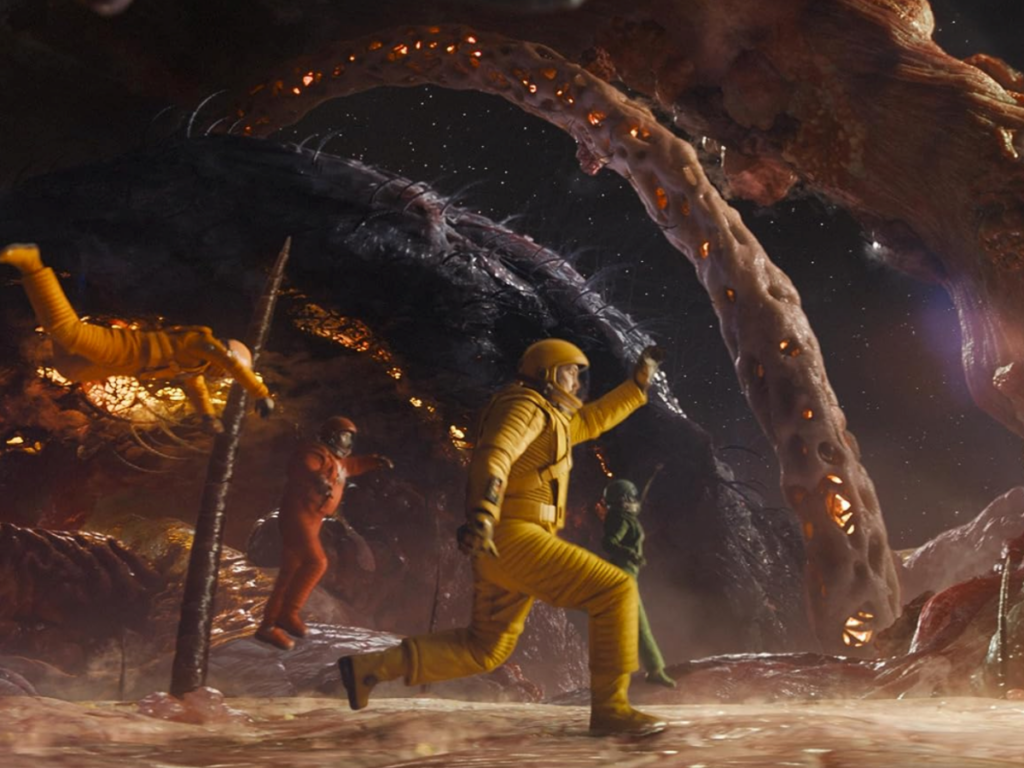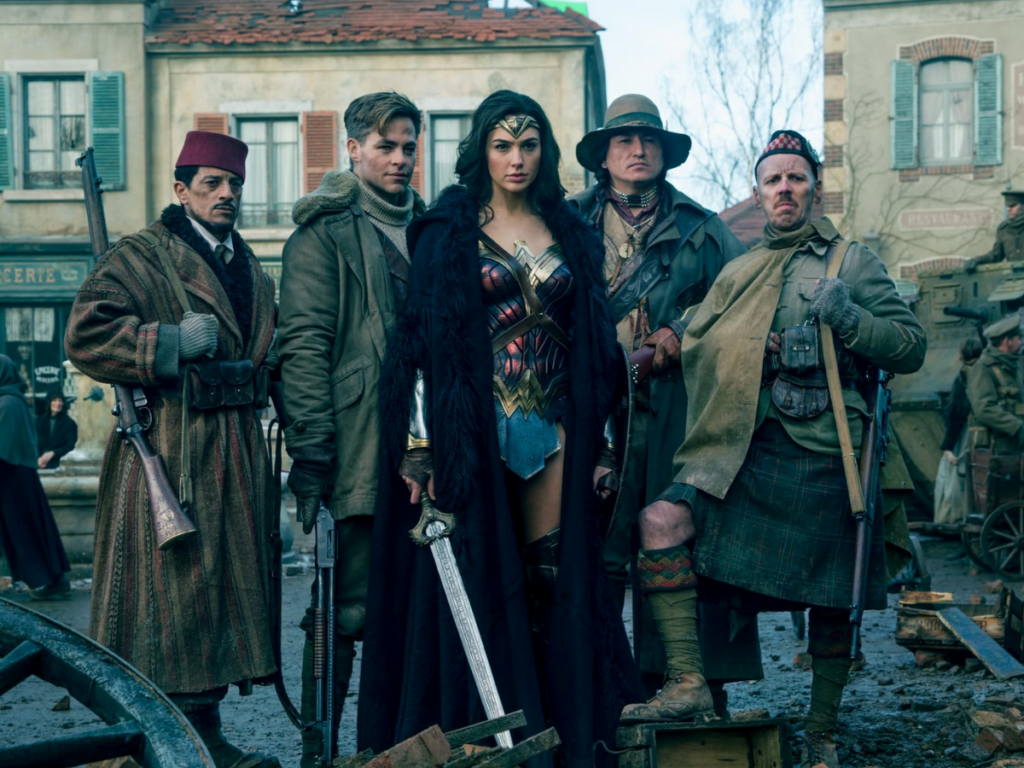As I mentioned in a blog earlier this week, the summer movie season—traditionally a time for Hollywood’s biggest, most bombastic offerings—is getting off to a bit of a whimper. And while some big films are on the summertime docket, 2024 is potentially shaping up to be a sleepier one at the multiplex. Sensing superhero fatigue, both Disney/Marvel and Warner Bros./DC are cutting way back on their offerings in that genre. We’re feeling the impact of the actors’ and writers’ strikes from last year. And, honestly, the box office is still recovering from COVID-centric shutdowns.
But if nothing strikes your fancy at the theaters, Plugged In still has you covered. We’d like to offer our own list of good, fun and often inspiring films—all released in the last decade’s worth of summers.
This being Plugged In and all, we’ve selected films that are, broadly speaking, family friendly. But not every film here is fit for every family. All of them have some issues, and some of the ones below have significant ones. Most of the films listed lean more toward teens (as blockbusters themselves tend to do). Be sure to check out our full review before queuing one of these up.
So with that caveat out of the way, pour yourself a lemonade, settle into your hammock, and check out some of the last decade’s best summertime blockbusters (listed in alphabetical order).

Ant-Man
(2015, PG-13)
Summer movies tend to be big. But this one? It’s tiny—or at least its titular hero is. Scott Lang is an ex-con looking for a fresh start. And he gets an unexpected one after he breaks into the house of famous inventor Dr. Hank Pym, who promptly offers him a job … and a chance to become a hero. This film has many of the issues we expect from a Marvel superhero film these days, namely superhero violence and some profanity. But it also offers a resonant, redemptive character arc and a really touching father-daughter story. This superhero flick shrinks its stakes down, and in so doing it finds some unexpected heart.

Avengers: Endgame
(2019, PG-13)
What? Back-to-back Marvel movies? Yep. But honestly, you couldn’t expect me to leave Endgame off this list, could you? Avengers: Endgame capped a 22-film saga, and it stuck the landing. And it ends, as the series began, with the imperfect superhero Tony Stark. In 2008’s Iron Man, the hedonistic Stark nearly died in the desert—and that brush with death changed his entire life trajectory. He tells his longsuffering assistant, Pepper Potts, that “I shouldn’t be alive, unless it was for a reason.” That reason culminates here, finishing Stark’s transformation from a me-first playboy to a self-sacrificial hero. Oh, and some other do-gooders get into the action, too, as they confront the intergalactic baddie Thanos one last time.

Dunkirk
(2017, PG-13)
Christopher Nolan’s Oscar-nominated war drama doesn’t neatly fit into the box of light summertime blockbuster. This is a serious war movie. But it’s also thrilling, inspiring and—for a war movie—surprisingly clean. The film centers on what could’ve been (and, in many ways, was) one of the biggest Allied disasters of World War II. Nearly 400,000 men are trapped on a French beach by Nazi soldiers with no clear path of escape. Had they surrendered—as logic seemed to dictate they should—the course of the war, and history, would’ve been irrevocably changed. But they didn’t. And in Nolan’s tale, we see plenty of heroes walk, sail and fly toward a strange sort of victory. While this film contains plenty of violence, crass language and other elements, it never strays past its PG-13 rating. And it reminds us why this retreat was ultimately called “The Miracle of Dunkirk.”

Free Guy
(2021, PG-13)
It’s not easy being an extra in a video game. Just ask Guy, the perpetually helpful bank teller in a violent, chaotic open-world game. But, thanks to a bit of code, Guy develops a sort of sentience and—get this—free will. He can make choices of his own within the game. And with those choices, his whole world changes. Free Guy comes with plenty of problems, yes. But it also reminds us of our own God-given ability to make choices, and how we should be using that priceless gift. As I said in my review, “We’re players, imbued with both free will and purpose—filled with the knowledge that we are loved and valued, and endowed with the ability to call our own shots, to help make our own little corners of the world a little better … or a little worse.”

Guardians of the Galaxy Vol. 3
(2023, PG-13)
Last year was a pretty disappointing one for superhero movies. Guardians of the Galaxy Vol. 3—despite some significant issues—was the exception. The film centers on the character Rocket Raccoon and his backstory. We meet his “creator,” the High Evolutionary. But we come to understand that the High Evolutionary wasn’t solely responsible for Rocket’s makeup: Something far more powerful and potent was at work, too. Christians can watch this film and find a hint of God in there. But even those not so spiritually inclined will find plenty of inspirational messages pointing to the beauty, poignancy and importance of family. And even though this can be a really difficult film to watch in spots—Rocket’s upbringing was truly horrific—those difficulties arguably add to its power.

Incredibles 2
(2018, PG)
The super-endowed Parr family saved the world. But it wasn’t enough to repeal a ban on superheroes or eliminate the prejudice many have. But one PR-savvy businessman would like to change all that. And he wants to hire Helen Parr—one-time Elastigirl who’s now a full-time mom—to be the face of his new campaign. But that means leaving Bob, aka Mr. Incredible himself, home with the kids. Historically, Pixar has had a knack for making boring look beautiful: If most of us had a choice between saving the world with our superpowers and staying home to change diapers, most of us—and the movies we watch—would lean toward the former. But Pixar reminds us of the heroism that comes with being an imperfect, committed parent, even as it praises more traditional superheroism. Oh, and if that wasn’t enough, The Incredibles comes with some profound messages about the dangers of technology, too. If that’s not a Plugged In home run, I don’t know what is.

Inside Out
(2015, PG)
Pixar earns a second-straight spot on our list with this hyper-ambitious tale of a girl named Riley and the contentious emotions that live inside her. Riley’s family is moving, see—and Riley’s not at all happy about it, as hard as she tries. And that (her emotion Joy contends) is the way it should be. I mean, isn’t being happy, like, the best thing ever? Who wants to be associated with that dour ol’ killjoy, Sadness? In true Pixar fashion, though, Inside Out reminds us that being allowed to be sad is critical for Riley’s—and our—well-being. Not only is Inside Out a fun, thoughtful movie, but it just might give parents a whole new vocabulary to help talk with their kids about their own emotions.

Minions: The Rise of Gru
(2022, PG)
For being a bad guy, Gru has sure been a part of some pretty great movies. In Minions: The Rise of Gru, we meet the 11-year-old villain-in-the-making, who’s already surrounded by his ever-present, ever-yellow minions. His current goal? To become a member of the Vicious 6. But has he works toward that goal, Gru realizes that maybe that particular brand of villainy—no matter how prestigious—doesn’t hold a candle to having friends you can count on. The Rise of Gru is perhaps a wee bit lighter on its messaging than some of the Despicable Me films, and it has some bathroom humor and other issues to navigate. But it’s ultimately sweet and fun. And it reminds us that a threefold cord is not easily broken, even if some of those strands might be wearing overalls.

Top Gun: Maverick
(2022, PG-13)
We did not need another Top Gun movie—especially since the first one was made 35 years before. Or did we? Tom Cruise’s return to the cockpit proved to be a runaway success at the box office and practically a template for what a summer blockbuster should be: a fun, thrilling story that sends you back out into the world with a smile on your face. The film has some reasonably strong messages, too, with Cruise’s Maverick slowly molding a bunch of selfish hot shots into a team, with each member willing to sacrifice for the others. Though it has some definitely PG-13 issues to navigate, this adrenaline ride exceeds expectations.

Wonder Woman
(2017, PG-13)
Outside the consistently successful Batman, DC superheroes have recently lagged behind their cohorts in the Marvel Cinematic Universe, both in terms of quality and box-office bankability. But Wonder Woman changed that for a blip. How? It gave us a real hero. Diana, aka Wonder Woman, doesn’t wallow in darkness or angst. She’s a beacon of hope in the dark world of World War I, and she never lets that dim. And while the film contains plenty of problems (including Diana’s quasi-divinity and one particularly suggestive scene), our titular superhero reminds us that real heroism isn’t about how well you fight; it’s about why. Diana fights for all the right reasons, and that’s great to see.








5 Responses
“Last year was a pretty disappointing one for superhero movies. Guardians of the Galaxy Vol. 3—despite some significant issues—was the exception”
Spider-Man: Across the Spider-Verse also performed well critically and commercially.
The issue I had with the otherwise quite fun first “Wonder Woman” movie was that it went back and forth on the morality of whether or not killing Ares would solve anything.
The main issue I had with the somewhat morose second was that the last ten minutes (the impending nuclear war) were absurdly excessively intense for what was until then a typical PG-13 popcorn film, to say nothing of centering the drama on an unlikable father and his son in a … Wonder Woman film.
My personal favorite summer movies of all time are “E.T: The Extra-Terrestrial” (1982), “The Lion King (1994)” and “The Chronicles Of Narnia: Prince Caspian” (2008).
“Prince Caspian” was notably less violent and intense for a children’s movie than “The Lion, the Witch, and the Wardrobe” was (which I don’t think deserved its PG rating).
Prince Caspian is less violent than the extended version of The Lion, the Witch, and the Wardrobe, however both movies cut scenes until they got the PG rating. With the theatrical versions, I believe there were more minutes of violence in Prince Caspian, especially with the added scenes of the night raid on Miraz’s castle and Peter fighting Caspian, than in LWW, however, the serious injuries in LWW affected characters we knew better and might be harder to watch.
I do see where you are coming from, primarily because the Stone Table scene in LWW is made well and we feel the despair of Susan and Lucy. Apparently drawing the scene in the novel deeply affected the original illustrator Pauline Baynes. “She told me that while drawing the picture of Aslan enduring all the ‘awfulnesses’ at the hands of the White Witch and her dreadful creatures, she was crying all the time, ‘How could they do this to him?’ It was difficult to draw these things when it was breaking her heart and tears were falling on the picture. Pauline said that it was after she posted the illustrations of The Lion, the Witch and the Wardrobe to Geoffrey Bles that the truth struck her. Now she knew why she was crying for Aslan: she was weeping for the Crucified Christ.” – (C.S. Lewis and His Circle).
Yeah, that’s very well put. Prince Caspian had more fights but they weren’t as intense and I didn’t feel they were as egregiously inappropriate for a young target audience as the “now DIE!” stabbing scene in LWW was. (I sometimes think that depictions of the Christ story have western audiences a bit too comfortable with exposing very young children to a degree of violence they wouldn’t accept from the likes of video games or even other stage plays [contrast Easter Passion Play] or movies.)